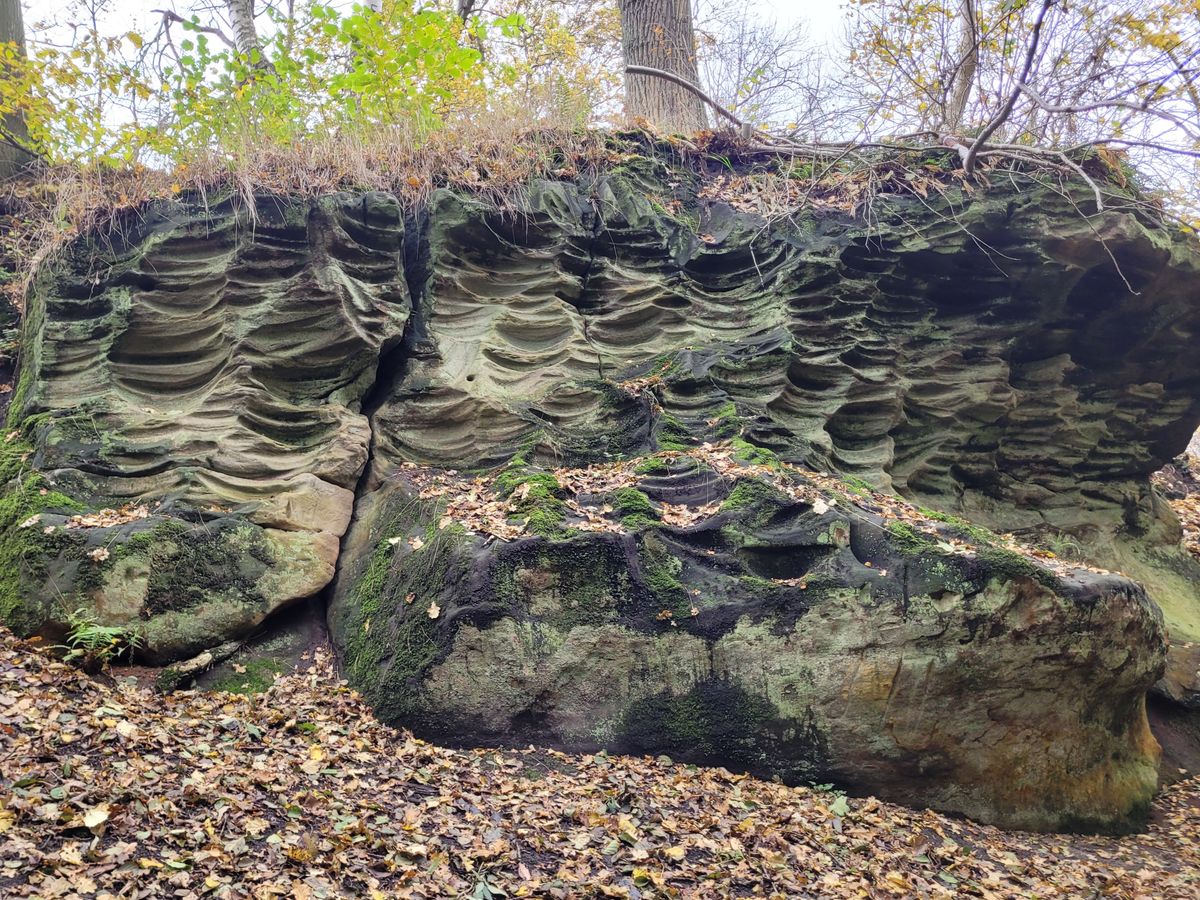About
From a distance, the stream ravine, situated just outside the village of Gantofta south of Helsingborg, seems like a cluster of trees amid flat farmland; however, a closer look reveals treetops nestled in an enchanting valley. As you approach and descend the staircase to the basin, a concealed, lush realm unfolds, showcasing porous sandstone bedrock walls. Etched with hundreds of mysterious prehistoric bowl-shaped grooves, these walls slope inward while towering trees assert their presence with roots firmly entwined in the sandstone.
Decades ago, there was a belief that the sandstone walls served as sharpening stones, with the grooves thought to have been created by people sharpening their swords or axes against them, hence the place name. Despite this, the notion has since been disproven by several scholars.
While the exact age and purpose of the grooves remain uncertain, modern theories have emerged in an attempt to unravel this puzzling enigma. One hypothesis posits that locals spun a wheel against the walls to create stone flour. Another notion, put forth by geologists, attributes the grooves to the erosive forces of ice-related streams and meltwater, which could have gradually shaped the terrain.
However, the most current prevailing expert theories suggest that the grooves are remnants of sacrificial cult activities from the Bronze Age, likely infused with religious or magical significance. Within this framework, it is conceivable that participants engaged in repeated ritualistic acts to potentially form the grooves in symbolic spiritual patterns. The distinctive nature of the ravine, setting it apart from the surrounding landscape, implies unique importance, indicating that it may have attracted individuals for pagan practices.
Related Tags
Know Before You Go
Kindly refrain from touching the grooves, as the sandstone, being loose and delicate, has the propensity to easily crumble upon contact.
South of Helsingborg, Gantofta is easily reached from the nearby E6 motorway. Adjacent to the ravine is a two-car parking lot, with a larger alternative behind the Sliprännan bus stop, a short 5-minute walk away. Public transport users can catch the hourly regional bus no. 299 from Helsingborg's central station to Sliprännan.
Published
January 2, 2024








































